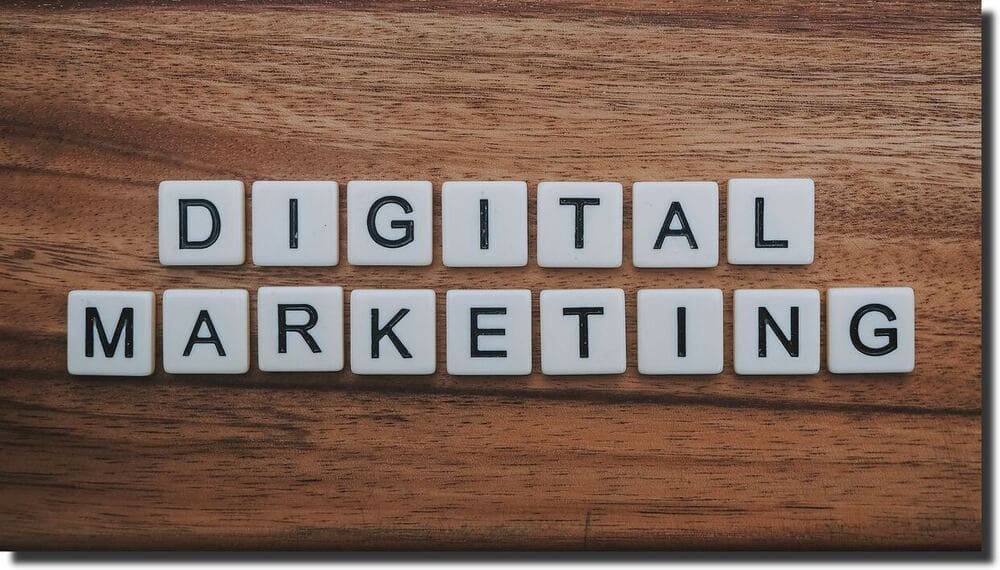In today’s fast-paced business landscape, effective communication and promotion are essential for any company’s success. Two key components of this promotional effort are marketing and advertising. While these terms are often used interchangeably, they represent distinct strategies and tactics within the broader realm of promoting products and services.
In this article, we will delve into the differences between marketing vs advertising, helping you better understand their unique roles and how they work together to achieve business goals.
What is Marketing?

Marketing refers to the broad range of activities and strategies that businesses and organizations use to promote their products, services, or ideas to target audiences. It involves understanding customer needs, creating value through products or services, and effectively communicating that value to potential customers. Marketing encompasses various processes, tactics, and techniques that aim to attract, engage, and retain customers, ultimately driving sales, brand awareness, and business growth.
Types Of Marketing
Marketing strategies can be broadly categorized into two main types: inbound marketing and outbound marketing. These approaches represent distinct ways of reaching and engaging with target audiences. Let’s explore each type in detail:
Inbound Marketing
Inbound marketing is a customer-centric approach that focuses on attracting potential customers through valuable content and interactions, rather than aggressively pushing messages at them. The goal of inbound marketing is to naturally draw prospects in and build long-term relationships. It is based on the concept of providing relevant and helpful information that addresses the needs and interests of the target audience.
Key characteristics of inbound marketing include:
| Content Creation | Producing high-quality and relevant content, such as blog posts, articles, videos, and infographics, that educates, informs, and entertains the audience. |
| Search Engine Optimization (SEO) | Optimizing content to rank higher in search engine results, making it easier for potential customers to find. |
| Social Media Engagement | Using social media platforms to share content, interact with followers, and build a community around the brand. |
| Email Marketing | Sending targeted and personalized emails to subscribers, sharing valuable content, updates, and promotions. |
| Content Offers | Providing valuable resources, such as e-books, whitepapers, and webinars, in exchange for the audience’s contact information. |
| Lead Nurturing | Building relationships with leads over time by providing them with relevant and helpful information, guiding them through the buyer’s journey. |
| Marketing Automation | Using tools and technology to automate and streamline marketing tasks, such as email campaigns and lead tracking. |
| User-Centric Design | Ensuring that websites and digital assets are user-friendly, intuitive, and provide a seamless experience for visitors. |
Inbound marketing aims to establish the brand as a trusted source of information and expertise, thereby attracting and retaining a loyal customer base.
Outbound Marketing:
Outbound marketing, also known as traditional or interruption marketing, involves proactively reaching out to potential customers through various channels to deliver promotional messages. This approach is more focused on pushing messages to a wide audience, often interrupting their daily activities to capture attention.
Key characteristics of outbound marketing include:
| Advertising | Placing advertisements in various media channels, such as television, radio, print, and online platforms, to reach a broad audience. |
| Cold Calling | Reaching out to potential customers via phone calls, often without prior interaction or relationship. |
| Direct Mail | Sending physical marketing materials, such as brochures or flyers, to a targeted list of recipients. |
| Telemarketing | Contacting potential customers by phone to promote products or services. |
| Trade Shows and Events | Participating in industry events, conferences, and trade shows to showcase products and engage with potential customers. |
| Billboards and Signage | Using physical signage and billboards to promote products or services to a local audience. |
| Interruptive Digital Ads | Displaying ads that interrupt online activities, such as pop-up ads or pre-roll video ads. |
Outbound marketing seeks to generate immediate results by reaching a large audience, but it can sometimes be seen as intrusive and may not always resonate with the target audience.
Both inbound and outbound marketing have their own strengths and weaknesses, and the choice between the two depends on factors such as the target audience, industry, budget, and overall marketing goals. Many modern marketing strategies combine elements of both approaches to create a balanced and effective promotional strategy.
What Is Advertising?
Advertising refers to the process of creating and delivering promotional messages to a target audience with the goal of influencing their behavior, opinions, or perceptions. It is a strategic communication effort designed to generate awareness, interest, and action related to a product, service, brand, or idea. Advertising is a key component of marketing and plays a crucial role in promoting and selling goods and services.
Types Of Advertising
Advertising can be broadly categorized into two main types: traditional advertising and digital advertising. Each type includes various methods and channels for reaching target audiences. Here’s an overview of both:
Digital Advertising:
Digital advertising offers the advantage of precise targeting, real-time tracking, and the ability to adjust campaigns on the fly. It allows advertisers to reach audiences across various devices and platforms, tailoring messages to specific segments for higher engagement and conversion rates.
Here are some key forms of digital advertising:
- Search Engine Marketing (SEM)
- Social Media Advertising
- Display Advertising
- Video Advertising
- Content Marketing
- Email Marketing
- Influencer Marketing
- Affiliate Marketing
- Mobile Advertising

Traditional Advertising:
Traditional advertising refers to the traditional methods and channels that have been used for promoting products, services, or brands before the rise of digital technology. Traditional advertising methods can still be effective in reaching specific audiences and generating brand awareness, especially in local markets or industries where digital adoption may be slower.
Here are some key forms of traditional advertising:
- Print Advertising
- Broadcast Advertising
- Outdoor Advertising
- Billboards
- Direct Mail Advertising
- Telemarketing
- Events and Sponsorships
- Public Relations
- Word-of-Mouth Advertising
- Promotional Items
- Face-to-Face Sales
- Cinema Advertising
Main Difference Between Marketing vs Advertising
Scope and Purpose:
Marketing is a broader concept that encompasses various activities aimed at creating, communicating, delivering, and exchanging offerings that have value for customers, clients, partners, and society at large. It involves market research, product development, branding, pricing, distribution, and customer relationship management.
Advertising is a specific component of marketing that focuses on promoting a product, service, or idea through paid messages or content. The primary goal of advertising is to raise awareness, generate interest, and persuade potential customers to take a specific action, such as making a purchase or visiting a website.
Focus
Marketing takes a holistic approach, considering all aspects of the customer journey and the entire business strategy. It involves understanding customer needs, creating customer value, and building long-term relationships.
Advertising primarily focuses on delivering a persuasive message to a target audience to influence their behavior in a specific way, usually in the short term.

Components:
Marketing consists of the “4Ps” (Product, Price, Place, Promotion) or the extended “7Ps” (adding People, Process, and Physical Evidence). It involves a comprehensive strategy that goes beyond just promotion.
Advertising is one of the components of the “Promotion” element of the marketing mix. It is concerned with creating and delivering persuasive messages through various channels.
Duration:
Marketing is an ongoing, continuous process that involves strategic planning, implementation, and adaptation over time.
Advertising campaigns are often time-bound and focused on specific objectives. They may have a shorter duration and are usually tied to specific promotions or events.
Cost and Investment:
Marketing encompasses a wide range of activities and may involve significant investment beyond advertising, such as research and development, product design, and customer support.
Advertising requires a financial investment to create and disseminate messages through various channels, such as TV, radio, print, online ads, and social media.
Communication Strategy:
Marketing involves a comprehensive communication strategy that includes various tools and channels, such as advertising, public relations, direct marketing, sales promotions, and more.
Advertising specifically focuses on creating attention-grabbing messages and delivering them through chosen media channels.
In summary, while advertising is a subset of marketing and focuses on promotion through persuasive messages, marketing encompasses a broader range of activities aimed at creating and delivering value to customers, maintaining relationships, and achieving long-term business goals.
Is Marketing or Advertising More Valuable?
Both marketing and advertising are valuable components of a comprehensive business strategy, and their importance can vary depending on the specific goals and circumstances of a company. It’s not a matter of one being inherently more valuable than the other; rather, they work together synergistically to achieve overall success.
Marketing encompasses a broader range of activities, including market research, product development, pricing, distribution, and customer relationship management. It’s about understanding the market, identifying consumer needs, and creating products or services that fulfill those needs. Marketing sets the foundation for a company’s overall strategy and guides how products or services are positioned in the market.

Advertising, on the other hand, is a specific subset of marketing that focuses on promoting products or services to a target audience through various communication channels. It aims to create awareness, build brand recognition, and persuade potential customers to take specific actions, such as making a purchase. Advertising helps bring attention to the offerings that marketing has developed and positioned.
In essence, marketing provides the strategic direction and context for advertising efforts. Without effective marketing, advertising might not reach the right audience or convey a compelling message. Conversely, without impactful advertising, the best marketing strategies might not translate into customer engagement or sales.
In some situations, businesses might prioritize marketing efforts over advertising, especially when entering new markets or introducing innovative products. In other cases, heavy advertising might be essential to gain visibility and compete in a crowded marketplace.
Ultimately, the value of marketing and advertising depends on the company’s goals, target audience, competitive landscape, and the specific stage of the product or service lifecycle. To achieve the best results, businesses should aim to integrate both marketing and advertising seamlessly, leveraging their combined strengths to drive success.
Conclusion
In the dynamic world of business promotion, understanding the differences between marketing vs advertising is crucial for crafting effective strategies. While marketing encompasses a holistic approach to creating and delivering value, advertising focuses on spreading promotional messages to generate interest and drive action. Both are integral to achieving business success, and a harmonious integration of these approaches ensures that companies can connect with their target audience, build brand loyalty, and achieve their desired outcomes in a competitive market.



